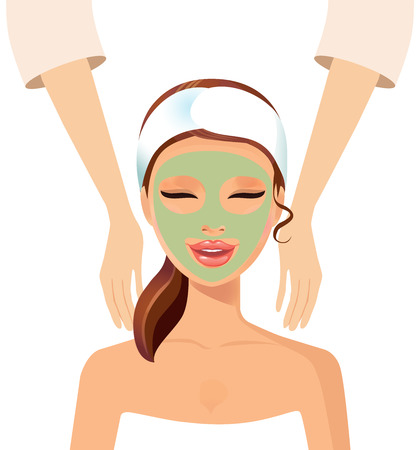Introduction to Face Masks
In recent years, skincare has become a huge part of everyday routines for people across the United States. Whether youre scrolling through TikTok or browsing shelves at Target, its impossible to miss the buzz around face masks. From self-care Sundays to quick fixes before a big event, face masks—both homemade and store-bought—have exploded in popularity. Americans are more conscious than ever about what theyre putting on their skin, looking for ways to achieve that healthy, glowing look without breaking the bank. With so many influencers and beauty gurus sharing recipes for DIY masks or reviewing the latest sheet mask launches, it’s no wonder face masks have become a go-to skincare staple. But with endless options out there, how do you know which type is really worth your time and money? This article dives into the world of DIY and store-bought face masks to help you decide which one best suits your lifestyle and skincare goals.
2. What Are DIY Face Masks?
If you’ve ever scrolled through beauty tips on TikTok or Pinterest, you’ve probably come across a ton of recipes for DIY face masks. But what exactly are they? Simply put, DIY (Do-It-Yourself) face masks are homemade skincare treatments that use ingredients commonly found in your kitchen or pantry. Think honey, avocado, oatmeal, yogurt, and even coffee grounds—these everyday items can be mixed together to target specific skin concerns like dryness, acne, or dullness.
The main appeal of DIY face masks is all about customization and control. When you whip up a mask at home, you know exactly what’s going onto your skin—no mystery chemicals or hard-to-pronounce additives. Plus, you can tweak the recipe based on your skin type and needs. Maybe your skin is feeling extra dry? Add some avocado for hydration. Fighting breakouts? Try a little honey for its natural antibacterial properties.
| Common DIY Ingredient | Skin Benefit |
|---|---|
| Honey | Soothes and hydrates; antibacterial |
| Avocado | Moisturizes; packed with vitamins |
| Oatmeal | Calms irritation; gentle exfoliation |
| Yogurt | Exfoliates with lactic acid; brightens skin |
| Coffee Grounds | Reduces puffiness; exfoliates dead skin cells |
The bottom line? DIY face masks give you the freedom to experiment and personalize your skincare routine without spending a fortune. For anyone who values transparency in their products or just loves getting creative, making your own face mask can feel empowering and fun.

3. What Are Store-Bought Face Masks?
When you walk down the skincare aisle in any major US drugstore or retailer, you’ll find an overwhelming variety of store-bought face masks lining the shelves. These masks come in several types, each designed to target different skin concerns and fit into busy American lifestyles. The most popular options include sheet masks, peel-off masks, and clay masks. Sheet masks are single-use fabric sheets soaked in serum, known for their convenience—just open the pack, unfold, and place it on your face with zero mess. Peel-off masks have a gel-like consistency that dries on your skin and can be peeled off in one layer; they’re loved for that oddly satisfying removal process and their promise to unclog pores. Clay masks typically come in tubs or tubes and require you to spread them on your face, where they work to absorb excess oil and deep-clean pores.
One of the biggest advantages of store-bought face masks is their convenience—no mixing, no measuring, just grab and go. They’re pre-formulated by established skincare brands like Neutrogena, Olay, and Glamglow, often backed by dermatological research and precise ingredient lists. Whether you’re shopping at Target, Walgreens, or Ulta, you’ll find masks tailored for hydration, acne control, anti-aging, brightening, or soothing sensitive skin. For consumers who want predictable results with minimal effort (and maybe a bit of “me time” with a fun mask selfie), store-bought options deliver a ready-to-use solution that fits right into the fast-paced American routine.
4. Pros and Cons: DIY Face Masks
When it comes to skincare, making your own face masks at home has become super popular, especially if you want to know exactly what’s going onto your skin. But before you raid your kitchen for ingredients, let’s break down the real advantages and disadvantages of DIY face masks from a regular consumer’s perspective.
Cost
DIY face masks are usually budget-friendly. Most recipes use ingredients you already have at home, like honey, oatmeal, or yogurt. Compared to store-bought options, which can get pricey especially for premium brands, DIY masks are a wallet-saver.
Ingredient Transparency
One of the biggest perks is knowing every single ingredient in your mask. For anyone who’s ingredient-conscious or has sensitive skin, this level of transparency is unbeatable. You can avoid harsh chemicals, artificial fragrances, or preservatives that are common in commercial products.
Possible Skin Reactions
However, just because something is natural doesn’t mean it’s always safe. Some kitchen ingredients can actually irritate your skin or cause allergic reactions—think lemon juice or baking soda. There’s also the risk of inconsistent results since homemade recipes aren’t dermatologist-tested.
Effectiveness
The effectiveness of DIY masks can be hit or miss. While some people rave about glowing results, others might see little to no change. Store-bought masks often contain scientifically formulated active ingredients specifically designed to target skin concerns like acne or dryness. With DIYs, you might not get that same potency.
Quick Comparison Table: DIY Face Masks Pros & Cons
| Pros | Cons | |
|---|---|---|
| Cost | Low cost; uses common household items | May require buying fresh ingredients regularly |
| Ingredient Transparency | Full control over what goes on your face | No professional guidance on safe combinations |
| Skin Reactions | Avoid known allergens easily | Risk of irritation from improper use or strong natural acids/oils |
| Effectiveness | Customizable for personal needs | Lacks scientific formulation; inconsistent results possible |
If you love experimenting and want total ingredient control without spending much, DIY face masks could be a fun option. Just be sure to patch test new recipes and manage your expectations when it comes to results.
5. Pros and Cons: Store-Bought Face Masks
When it comes to store-bought face masks, there’s no denying they’re a staple in most skincare aisles across the U.S. Let’s break down what makes them so popular, as well as some potential drawbacks you might want to consider before adding another fancy jar or sachet to your cart.
Convenience Is Key
One of the biggest perks of store-bought face masks is convenience. They’re ready to use straight out of the packaging—no mixing, no mess, no extra trips to the grocery store for ingredients you’ll never use again. If you’re busy juggling work, family, and everything else, that “grab-and-go” factor is hard to beat. Plus, they often come with clear instructions and recommended usage times, making your at-home spa night super simple.
Professional-Grade Formulations
Many store-bought masks are developed by dermatologists or chemists who know their stuff. That means these products can target specific skin concerns—like acne, dryness, or aging—with tried-and-true ingredients in carefully balanced amounts. You get access to powerful actives like retinol, hyaluronic acid, or niacinamide that you just can’t whip up in your kitchen.
Consistent Results
If you find a mask that works for your skin type, you can usually expect consistent results with each use. Unlike DIY recipes that can vary depending on the freshness or source of your ingredients, store-bought masks are made to be uniform from batch to batch. This predictability is a huge plus when you’re looking for reliable skincare solutions.
The Price Factor
On the flip side, store-bought masks can be pricey—especially if you gravitate towards prestige brands or “clean beauty” labels. While drugstore options exist and sales pop up regularly (hello, Ulta coupons!), it’s easy to rack up costs if masking becomes a regular habit. And let’s be real: sometimes the fancy packaging adds more to the price than the actual formula does.
Potential Harsh Chemicals
Another downside? Some commercial face masks contain preservatives, fragrances, dyes, or other additives that can irritate sensitive skin or cause reactions. If you’re ingredient-conscious or have allergies, reading those tiny ingredient lists is a must. Not every product lives up to its natural or gentle claims—even if the marketing looks convincing.
In short, store-bought face masks offer unmatched convenience and professional expertise but may come at a higher price and with some questionable ingredients for those with sensitive skin or a passion for clean beauty.
6. Which One Fits Your Lifestyle?
Choosing between DIY face masks and store-bought options isn’t just about results—it’s really about what fits into your lifestyle. Time is a huge factor: If you love experimenting in the kitchen and have an extra half hour, DIY masks let you play with natural ingredients at home. But if you’re always on the go (hello, 9-to-5 hustle), grabbing a ready-made mask from your favorite beauty aisle is just way more convenient.
Budget also plays a big role. Homemade masks can be super affordable, especially if you already have honey, oats, or yogurt sitting in your fridge. On the other hand, store-bought masks range from budget drugstore finds to high-end splurges—so it’s easy to pick what your wallet can handle. Don’t forget that some DIY recipes might require buying special ingredients, which can add up.
When it comes to skin types, both options have their perks. DIY lets you customize everything—perfect if you have sensitive skin or allergies and want full control over what touches your face. Store-bought masks, though, are tested for safety and usually labeled for different skin concerns (think: acne-prone, dry, or aging skin), so there’s less guesswork.
Your personal values matter too, especially around clean beauty. If avoiding chemicals and cutting down on waste are important to you, making your own masks can align better with those values. But if you’re all about science-backed formulas and crave visible results fast, brands with dermatologist-tested products might earn your trust.
Bottom line: There’s no one-size-fits-all answer here. Whether you’re team DIY or a loyal Sephora shopper comes down to your schedule, budget priorities, skin needs, and what matters most in your beauty routine. Pick what feels right for you—and don’t be afraid to mix it up!
7. The Bottom Line: Making the Right Choice
When it comes to deciding between DIY face masks and store-bought options, there’s no one-size-fits-all answer. Both come with their unique pros and cons, and what works for your best friend might not be the best choice for you. If you’re someone who enjoys experimenting in the kitchen, values natural ingredients, or is working with a tight budget, homemade masks can be a fun and effective addition to your skincare routine. On the other hand, if you prioritize convenience, consistency, and dermatologist-tested formulas, store-bought masks are likely to give you peace of mind—and save you some time.
Ultimately, choosing the right mask boils down to understanding your own skin’s needs and preferences. Consider whether you have sensitive skin that reacts easily, specific concerns like acne or dryness, or if you simply crave that spa-like experience at home without any guesswork. Also, think about your schedule—are you willing to spend time preparing fresh ingredients, or do you need something quick and ready-to-use?
Whatever route you take, remember that the most important thing is how your skin feels and looks after using a product. Don’t be afraid to try both options over time and see what fits your lifestyle best. Taking care of your skin should feel good—not stressful or overwhelming. So listen to your skin, trust your instincts as a consumer, and choose what makes you look and feel your best.


